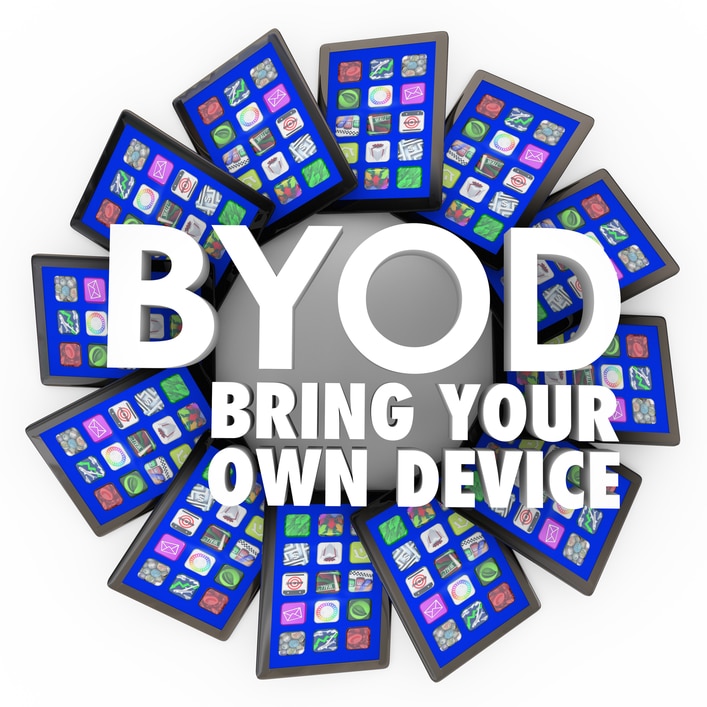Sales: 678.967.3854
Support: 866.252.6363
What We Do
Who We Serve
Success Stories
Latest Thinking
LATEST THINKING
About Us

By the DynaSis Team
BYOD―Bring Your Own Device, a program were employees use their own devices for work tasks, is moving from being an option to becoming a certainty. A 2015 report from research firm Tech Pro found that 60% of companies currently allow BYOD, with another 14% planning to do so, soon. A 2013 Gartner research survey predicted that by 2017, half of all employers would require employees to supply their own device for work purposes.
The reasoning is simple―not only does a firm save money when employees provide devices, but it also fosters greater employee satisfaction and work-related device usage. BYOD also drives innovation, not only because employees have access to work functions outside the office, but because firms that allow BYOD often reinvent their processes, adopting mobile-compatible apps for everything from timesheets to contact management and more.
Despite the benefits of BYOD, however, many problems that have plagued businesses for years―particularly security―continue to be concerns. In the Tech Pro survey, security was the number one reason companies reported as their reasoning not to allow BYOD.
Because of this consideration, we recommend firms approach BYOD like they should any other IT strategy―with proper evaluation and planning. It may be easy to say “yes” to employees regarding BYOD―or to do nothing and simply allow personal devices to creep onto the network―but neither of those approaches give businesses an optimal outcome.
Regarding security, advanced IT services providers such as DynaSis offer affordable mobile device management platforms (with IT support) that secure corporate access without restricting the user from enjoying the device, personally. These platforms include remote lock and wipe features and/or “find me” functions that help an employee recover a misplaced or stolen phone.
In the first instance, employees shouldn’t balk at remote lock and wipe―or any other access restrictions―on personal devices, provided it only impacts corporate data.
In the second example, most employees are grateful for locator solutions, since losing a mobile device or having one stolen and not recovered creates a financial burden on the owner.
As Gartner Vice President and distinguished analyst David Willis noted in the 2013 report, "We're finally reaching the point where IT officially recognizes what has always been going on: People use their business devices for non-work purposes," said Mr. Willis.
We couldn’t agree more, and provided that company leaders approach the effort with business (including security) focused planning and execution, we fully support BYOD. After all, if workers are going to sneak personal usage onto a business device, why not turn the tables and let them provide their device (with or without a subsidy) for business use?
An appropriate BYOD program has many elements, and we don’t have room to discuss them here. Furthermore, firms that implement BYOD should also develop the business case for their programs beforehand and make sure they’re extracting maximum benefit from BYOD.
We’ll save those discussions for a future article, and in the meantime, leave you to consider the statistics that clearly show BYOD is the future of business mobility.
